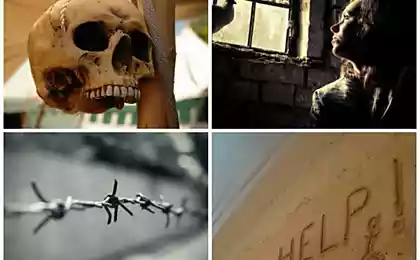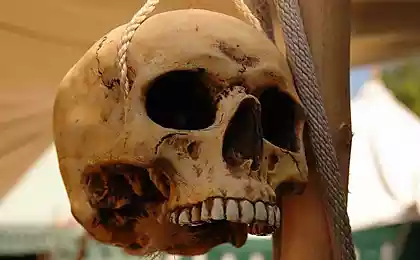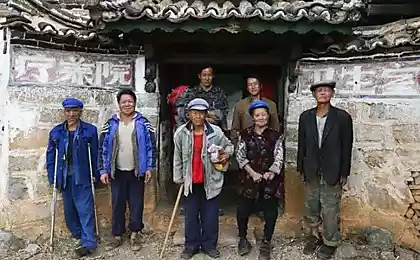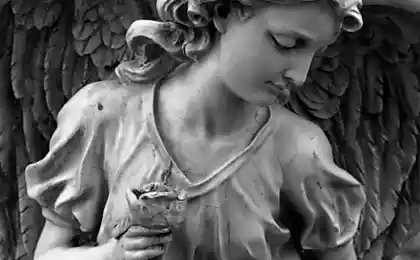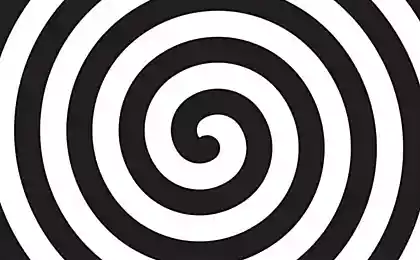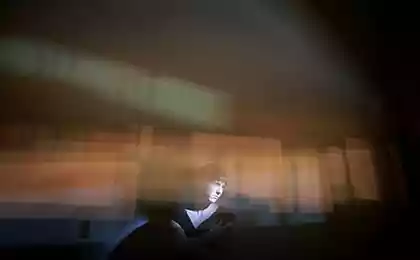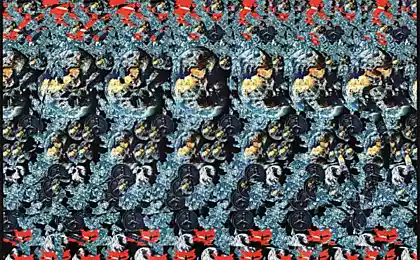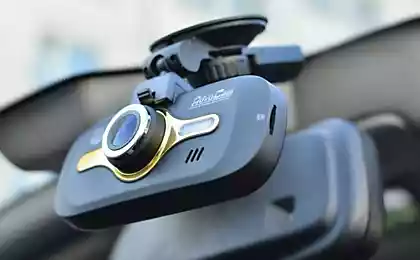799
Leprosarium
Although leprosy is now treated and have very rarely found in the world there is still a leper colony, or, as they are called a colony for lepers. Abu Zaabal - Egyptian colony for lepers 40 km from Cairo - was built in 1933. Police brought here lepers, who were not allowed to leave the colony, as the sole treatment of leprosy at the time was considered the insulation. Now living conditions in the institution with all necessary facilities much better than in the poor townships where the lepers arrived. That is why the 750 patients of the colony, and three or four thousand of cured lepers living in the adjoining Abdel Moneim Riad village do not want to leave this place. They can not be afraid of the stigma and violent offenses in the back. This story is not about suffering and unhappiness, but rather a microcosm of everyday life in the godforsaken place, separate from the world. Even in Egypt, many are not aware of the existence of shelters for lepers Abu Zaabal.
12 ph via Bigpicture
1. Abu Zaabal leper colony in Egypt, 40 kilometers from Cairo was built in 1933; on its territory is a hospital and an agricultural complex for self-existence. The bacteria responsible for leprosy, were discovered in 1873 by Dr. Gerhard Hansen. The disease is considered incurable and highly contagious until the 1930s. If you neglect the treatment of leprosy can progress, affecting the skin, nerves, limbs and eyes. In fact, leprosy is not so contagious - approximately 95% of people have immunity to it, and patients are no longer contagious after a couple of days after the start of treatment. (Claudia Wiens)
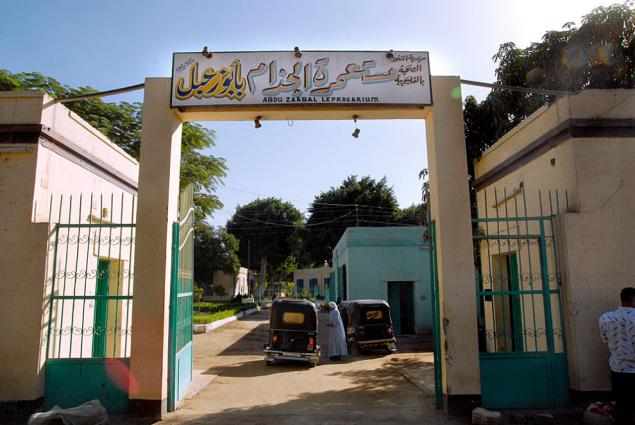
2. The police brought here lepers, who were not allowed to leave the colony, as the sole treatment of leprosy at the time was considered the insulation. It was a large prison in the open air. In those days, the living conditions there were terrible - at night mouse gnawed wounds of lepers while they slept. (Claudia Wiens)
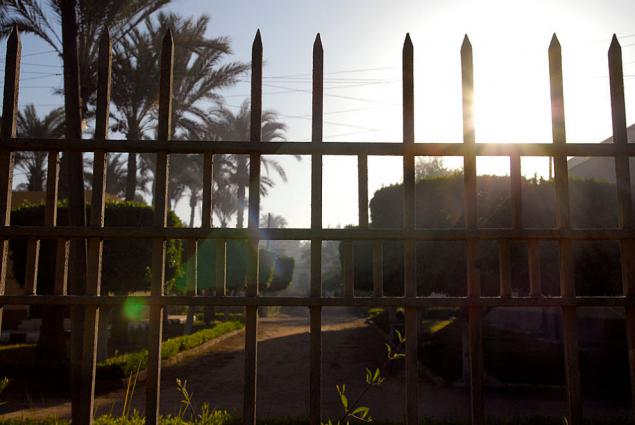
3. Abu Zaabal have more spacious chambers for men and less spacious - for women, since women are less likely to become infected with leprosy. There are large and small sleeping quarters, where each patient has its own bed and locker. Also, in many of the rooms have TVs. Patients who have lost their legs due to illness or leg, got new dentures, which are now learning to live. Sometimes it is difficult to distinguish from a leg prosthesis. (Claudia Wiens)
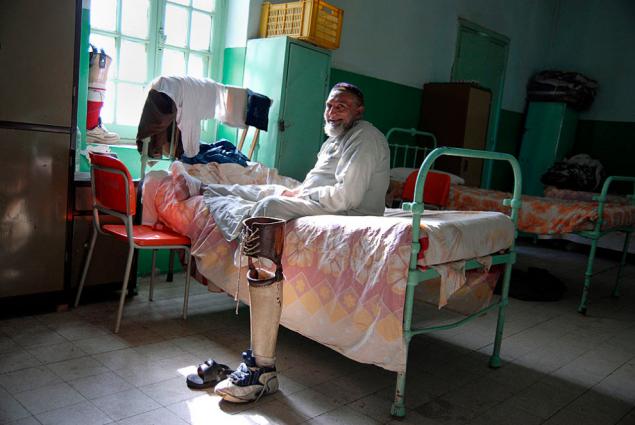
4. Abu Zaabala coffee shop, which is owned by the cure of leprosy. For the sake of - quite a popular place here. Effective treatment for leprosy or leprosy appeared in the late 1930s after the invention of dapsone and its derivatives. However, resistant to dapsone bacterial agents of leprosy gradually evolved and spread rapidly. It was only after the discovery mnogomedikamentoznoy therapy in the early 1980s, the disease can be recognized and successfully treated. (Claudia Wiens)
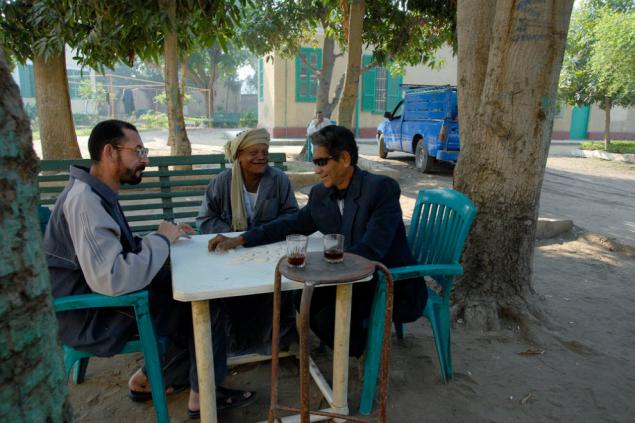
5. Sister Laura - the only nun from Egypt working in the colony for five years as a nurse. Every morning she bypasses all women, washed their wounds, and calms, joking and laughing with them. (Claudia Wiens)
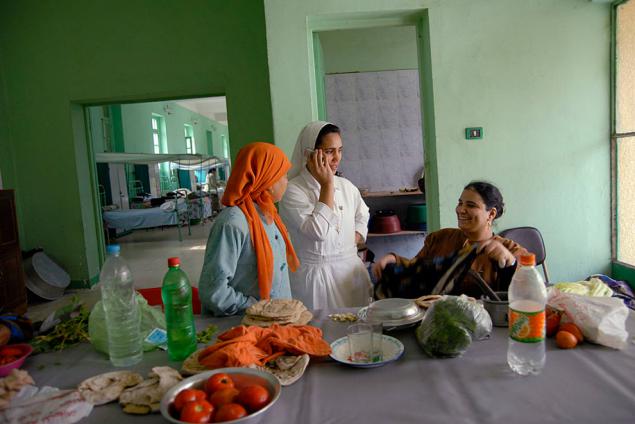
6. All those who have the power, wash, clean, cook and help those who have no strength. It's like a big family. Sometimes someone arguing about tastes and ingredients of prepared foods. Reminiscent of a normal life in your home, and the eternal debate of who should clean the onions. (Claudia Wiens)
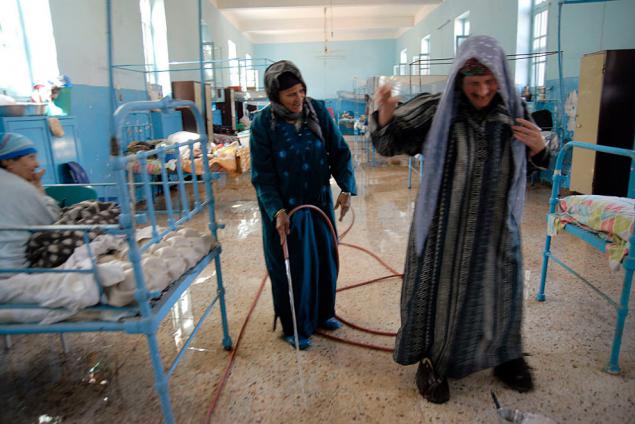
7. Women of the colony is separated from the men's large gardens in which patients are going to sit back and watch the others. (Claudia Wiens)
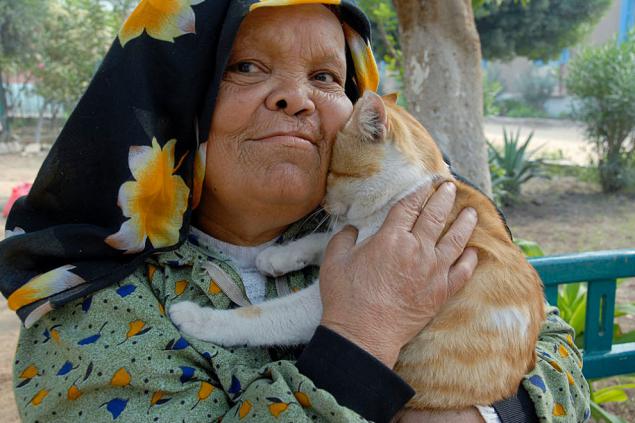
8. Abu Zaabal lives about 1,200 patients and about 130 come here for treatment. 85-year-old passage lived here for over 50 years. Although her feet and hands were deformed, she can walk and cook their own meals. In an interview it is absolutely pure and open. She loves to sing, teasing others, younger patients, and has a pretty wicked sense of humor. (Claudia Wiens)
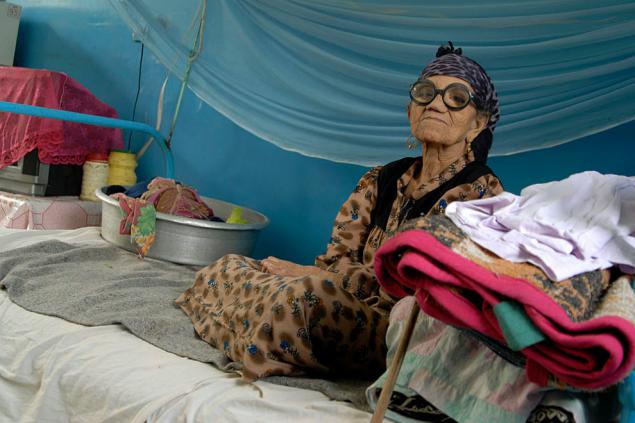
9. Photographer Claudia Vince was afraid to take pictures, while patients change their bandages, but relaxed atmosphere it pleased. The men were talking to each other and even joked. It has long been part of their lives, so they usually share the news until the nurse washes his wounds. (Claudia Wiens)
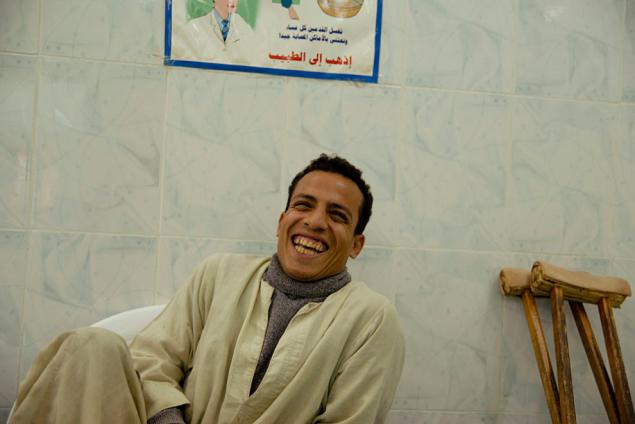
10. On the territory of the colony is a large agricultural complex, used mainly for the cultivation of "ting shock", cacti and some fruits. But over the years Egyptian government more and more reduces the colony, taking the land. (Claudia Wiens)
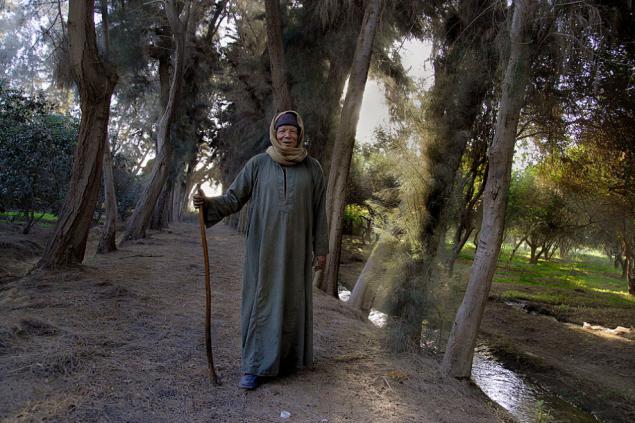
11. Small mosque in the center of Abu Zaabal - often come here all those who can walk. Christian patients regularly visiting priest. (Claudia Wiens)
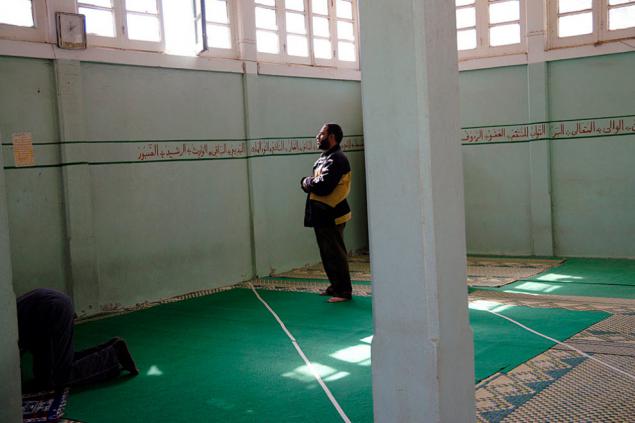
12. One of the main sponsors of Abu Zaabala «Caritas Egypt» founded in 1982, the socio-medical center in the nearby village of Abdel Moneim Riad. These kindergarten enrollment of approximately 120 children of lepers and former lepers. Children learn to read and write and receive one full meal a day, including fresh milk. Regularly comes therapist. (Claudia Wiens)
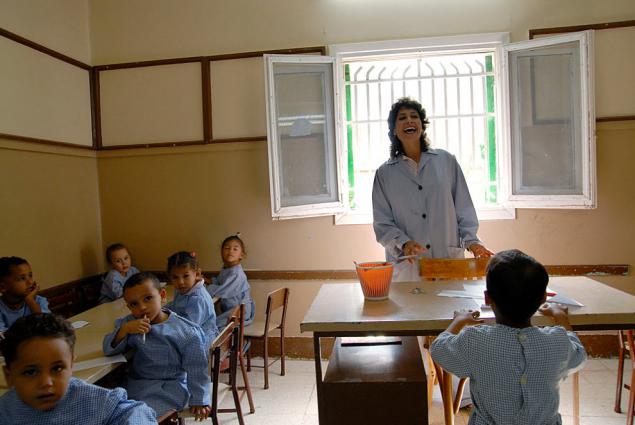
Source: http: //
12 ph via Bigpicture
1. Abu Zaabal leper colony in Egypt, 40 kilometers from Cairo was built in 1933; on its territory is a hospital and an agricultural complex for self-existence. The bacteria responsible for leprosy, were discovered in 1873 by Dr. Gerhard Hansen. The disease is considered incurable and highly contagious until the 1930s. If you neglect the treatment of leprosy can progress, affecting the skin, nerves, limbs and eyes. In fact, leprosy is not so contagious - approximately 95% of people have immunity to it, and patients are no longer contagious after a couple of days after the start of treatment. (Claudia Wiens)

2. The police brought here lepers, who were not allowed to leave the colony, as the sole treatment of leprosy at the time was considered the insulation. It was a large prison in the open air. In those days, the living conditions there were terrible - at night mouse gnawed wounds of lepers while they slept. (Claudia Wiens)

3. Abu Zaabal have more spacious chambers for men and less spacious - for women, since women are less likely to become infected with leprosy. There are large and small sleeping quarters, where each patient has its own bed and locker. Also, in many of the rooms have TVs. Patients who have lost their legs due to illness or leg, got new dentures, which are now learning to live. Sometimes it is difficult to distinguish from a leg prosthesis. (Claudia Wiens)

4. Abu Zaabala coffee shop, which is owned by the cure of leprosy. For the sake of - quite a popular place here. Effective treatment for leprosy or leprosy appeared in the late 1930s after the invention of dapsone and its derivatives. However, resistant to dapsone bacterial agents of leprosy gradually evolved and spread rapidly. It was only after the discovery mnogomedikamentoznoy therapy in the early 1980s, the disease can be recognized and successfully treated. (Claudia Wiens)

5. Sister Laura - the only nun from Egypt working in the colony for five years as a nurse. Every morning she bypasses all women, washed their wounds, and calms, joking and laughing with them. (Claudia Wiens)

6. All those who have the power, wash, clean, cook and help those who have no strength. It's like a big family. Sometimes someone arguing about tastes and ingredients of prepared foods. Reminiscent of a normal life in your home, and the eternal debate of who should clean the onions. (Claudia Wiens)

7. Women of the colony is separated from the men's large gardens in which patients are going to sit back and watch the others. (Claudia Wiens)

8. Abu Zaabal lives about 1,200 patients and about 130 come here for treatment. 85-year-old passage lived here for over 50 years. Although her feet and hands were deformed, she can walk and cook their own meals. In an interview it is absolutely pure and open. She loves to sing, teasing others, younger patients, and has a pretty wicked sense of humor. (Claudia Wiens)

9. Photographer Claudia Vince was afraid to take pictures, while patients change their bandages, but relaxed atmosphere it pleased. The men were talking to each other and even joked. It has long been part of their lives, so they usually share the news until the nurse washes his wounds. (Claudia Wiens)

10. On the territory of the colony is a large agricultural complex, used mainly for the cultivation of "ting shock", cacti and some fruits. But over the years Egyptian government more and more reduces the colony, taking the land. (Claudia Wiens)

11. Small mosque in the center of Abu Zaabal - often come here all those who can walk. Christian patients regularly visiting priest. (Claudia Wiens)

12. One of the main sponsors of Abu Zaabala «Caritas Egypt» founded in 1982, the socio-medical center in the nearby village of Abdel Moneim Riad. These kindergarten enrollment of approximately 120 children of lepers and former lepers. Children learn to read and write and receive one full meal a day, including fresh milk. Regularly comes therapist. (Claudia Wiens)

Source: http: //
